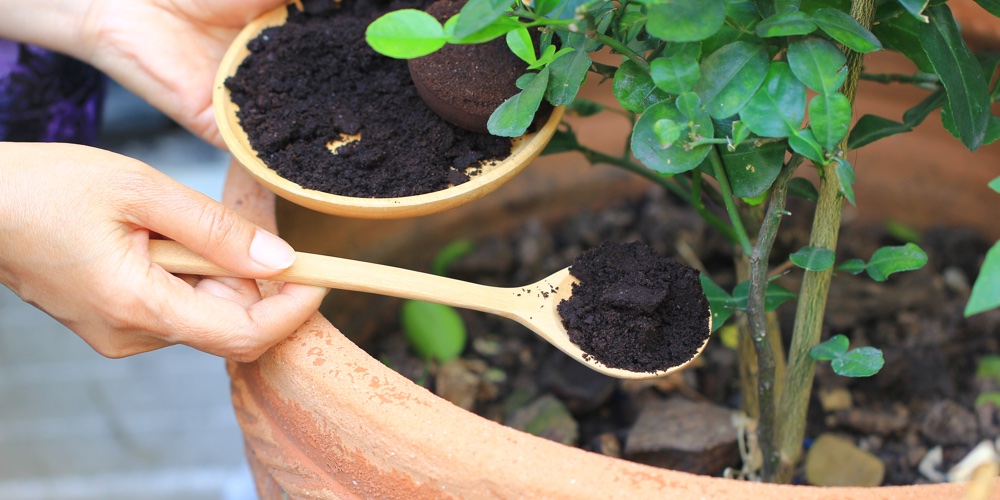Blog
How To Grow Coffee Beans
Struggling to grow your own coffee beans at home? You’re not alone. Many coffee lovers dream of cultivating their own plants but face challenges like choosing the right variety and providing proper care.
Did you know that Coffea arabica, a popular choice for home growers, can bloom into an attractive shrub with glossy green leaves and scented white flowers?
In this guide, you’ll learn everything from selecting the best coffee bean variety to harvesting and processing the beans. Grow your perfect cup of homemade coffee.
Selecting the Ideal Coffee Bean Variety for Cultivation
Coffee lovers grow Coffea arabica for its sweet taste and tempting aroma. This coffee plant has green leaves and white flowers that smell nice. It is native to the tropical areas of Africa and Asia, making it perfect for warm places.
If you want a smaller plant, pick the dwarf variety called Coffea arabica ‘Nana’. It needs less pruning and fits well indoors.
On the other hand, Robusta coffee beans come from the Coffea canephora plant. These beans are stronger in flavour but need more care to handle pests like aphids or scale insects. They also grow best in humid spots with lots of rain—a climate found in South America or Central America works well for these coffee trees.
Ensure your soil is free-draining; good soil helps all types thrive by keeping roots healthy without getting too soggy.
Choosing the Optimal Location for Coffee Plants
Coffee plants need a warm spot with bright, indirect light. Ideal temperature ranges from 16-24ºC. Keep them in areas like greenhouses or as house plants.
Choose a location away from pets since every part of the tree is toxic to dogs and cats. This ensures safety while growing coffee bean plants at home.
Methods for Planting Coffee Beans: Seeds, Cuttings, or Potted Plants
Growing coffee plants can be exciting. You have three main methods: seeds, cuttings, or potted plants.
Seeds:
- Soak seeds overnight in water.
- Sow them on moist compost.
- Keep seeds at around 27-29ºC.
- Use loam-based, peat-free compost.
- Repot every two to three years in the spring.
Cuttings:
- Take 20 cm long cuttings from a healthy coffee plant.
- Remove lower leaves, leaving only two at the top.
- Dip the end in rooting hormone for better growth.
- Plant into moist sand or perlite.
- Place in a shady spot and keep damp.
Potted Plants:
- Buy a young coffee plant from a nursery.
- Choose a pot with good drainage holes.
- Fill with loam-based, peat-free compost.
- Water until it drains from the bottom of the pot.
Essential Care for Thriving Coffee Plants
Water regularly, keeping the compost moist but not waterlogged. Use a liquid feed every two weeks during the growing season to give your coffee plant essential nutrients. Ensure high humidity by placing the plant in a tray of pebbles filled with water.
Mist the leaves often to keep them fresh and healthy.
Monitor temperature—coffee plants thrive best at 18-24°C (64-75°F). Avoid frost as it can damage or kill the plant. Maintain good light; indirect sunlight works well for indoor plants.
Make sure to watch out for pests like mealybugs that may harm your coffee tree.
Strategies for Watering and Fertilising Coffee Plants
Coffee plants need proper water and food to grow well. Follow these steps to keep your plants healthy.
- Water Regularly: Keep the compost moist, but not soggy. Check the soil often, especially in warmer months.
- Avoid Overwatering: Let the top of the soil dry before watering again. This prevents root rot.
- Feed Every Two Weeks: Use a liquid feed during the growing season, from spring to autumn.
- Choose the Right Fertiliser: Opt for balanced fertilisers with equal parts nitrogen, phosphorus, and potassium.
- Adjust for Growth Stages: Young plants need more nitrogen; mature plants benefit from higher potassium levels.
- Water Consistently in Hot Weather: Increase frequency during high temperatures between 16-24°C.
- Consider Rainfall: Adjust your watering schedule based on natural rain to avoid over-saturation.
- Monitor Plant Health: Look out for yellow leaves or slow growth as signs of nutrient deficiency or overwatering.
- Use Potted Plants Wisely: Ensure pots have drainage holes to prevent waterlogged roots.
These steps will help you grow strong and healthy coffee plants ready for bean production.
Techniques for Pruning Coffee Plants
Pruning keeps coffee plants healthy and productive. Follow these steps for the best results:
- Cut Back in Spring: Trim stems at a 45-degree angle above a leaf joint.
- Remove Dead or Weak Branches: Clear out any branches that look weak or dead.
- Thin Out Crowded Areas: Ensure enough space between branches for good airflow.
- Trim Suckers Regularly: Cut off small shoots growing from the base of the plant.
- Shape the Plant: Prune to maintain an even shape, keeping it about 2 metres tall.
- Use Clean Tools: Always sterilise your pruning shears to avoid spreading diseases.
- Mind the Variety: Coffea arabica ‘Nana’ needs less pruning.
A well-pruned plant can produce around 4,000 beans each year!
Advanced Insights into Coffee Plant Growth
Coffee plants face many challenges. Learn how to keep your plants healthy and strong… Discover tips for better growth using simple tools and methods.
Tackling Common Pests and Diseases in Coffee Plants
Coffee plants face several pests and diseases. Managing them is essential for a healthy, productive plant.
- Red Spider Mites: These tiny pests cause leaves to yellow and drop. Use neem oil or insecticidal soap to control them.
- Xylella fastidiosa: This bacterium leads to leaf scorch and plant dieback. Remove infected plants quickly to prevent spread.
- Aphids: Aphids feed on sap, causing curled leaves and stunted growth. Spray plants with a mix of water and dish soap.
- Ants: Ants protect aphids for their honeydew. Control ants by keeping the area clean and using ant baits.
- Borers: Borers tunnel into stems, weakening plants. Cut affected branches and treat wounds with fungicides like copper oxychloride.
- Mealybugs: Mealybugs weaken plants by sucking juice from leaves and stems. Wipe them off with rubbing alcohol-soaked cotton swabs.
- Leaf Rust (Hemileia vastatrix): Look for yellow spots on leaves which turn into brown rust patches. Use copper-based fungicide sprays to manage it.
- Coffee Berry Disease (Colletotrichum kahawae): Causes dark blotches on green coffee cherries, leading to fruit drop. Prune infected branches and spray with appropriate fungicides.
- Root-Knot Nematodes: These nematodes attack roots, causing galls and reducing uptake of nutrients and water—rotate crops every few years to reduce impact.
- Anthracnose: Affects coffee cherries turning them black or brown before ripening completely—apply sulphur sprays regularly during the wet season.
Comparing Indoor and Outdoor Coffee Plant Growth
Outdoor coffee plant growth and indoor cultivation each have unique advantages and challenges. Here’s a detailed comparison to help you decide which method suits your needs best.
| Indoor Growth | Outdoor Growth | |
|---|---|---|
| Environment Control | Highly controlled… protects from volatile weather… consistent temperature (16-24ºC)… bright, indirect light. | Depends on native habitat… exposed to elements… can grow up to 8m tall in favourable conditions. |
| Space Requirements | Limited space needed… suitable for smaller areas… can use pots or containers. | Requires larger space… best in gardens or farms… root systems need room to spread. |
| Pest Control | Lower risk indoors… easier to monitor… fewer pests and diseases. | Higher risk outdoors… more exposure to pests… needs regular monitoring and intervention. |
| Light Requirements | Bright, indirect light needed… place near windows… or use grow lights. | Direct sunlight preferred… tropical climate ideal… can affect plant health if inadequate. |
| Watering Needs | Easier to control… consistent watering… avoid over-watering. | Depends on climate… might need irrigation… natural rainfall can vary. |
| Growth Rate | Moderate growth… starts flowering in 3-4 years… manageable size. | Faster in ideal conditions… can reach full size quicker… more robust growth. |
| Maintenance | Lower maintenance… regular pruning… suited for casual growers. | Higher maintenance… requires more attention… suitable for serious growers/farmers. |
Effective Tips for Harvesting Coffee Beans
Pick cherries when they are deep red for the best flavour. Each tree can produce around 2,000 cherries or about one to two pounds of coffee per year. Gather ripe cherries by hand, ensuring only mature ones are selected.
Use a basket or bag to collect them easily. Inspect each cherry for quality before processing. This attention will yield top-notch green coffee beans ready for roasting.
Steps for Harvesting and Processing Coffee Beans
Coffee beans need careful attention. Follow these steps to harvest and process them:
- Monitor Ripeness: Check daily for ripe cherries. Look for red or almost black cherries.
- Handpick Cherries: Use your hands to pick only the ripe cherries from the coffee plants.
- Sort and Clean: Remove any debris and unripe cherries. Wash the good ones in clean water.
- Pulping: Remove the pulp using a pulping machine or by hand—this exposes the beans inside.
- Fermentation: Ferment beans in water tanks for 24 to 48 hours to remove mucilage.
- Drying Beans: Spread beans under the sun on drying tables or patios for 7 to 10 days until moisture is reduced to about 10%.
- Hulling: Remove the dried parchment layer using a hulling machine, revealing green beans.
- Sorting and Grading: Grade beans by size and quality using screens and electronic sorters if available.
- Roasting: Roast sorted green beans at temperatures between 180°C – 250°C for about 7-20 minutes depending on preference, until they turn brown and aromatic.
- Cooling Beans: Cool roasted beans quickly in cooling trays or machines, preventing over-roasting.
- Storing Beans: Store in airtight containers away from light, air, heat, and moisture to keep them fresh until use.
- Grinding: Grind roasted coffee as needed with a grinder set to your preferred grind size.
Conclusion
Choose the best Arabica variety to grow for quality beans. Pick a warm spot with bright, indirect light—16°C to 24°C is perfect. Plant seeds or use cuttings; keep the soil moist but not waterlogged.
Prune in spring and protect plants from pests like mites or aphids. Harvest ripe cherries after three years and process them carefully for fresh coffee beans at home.



